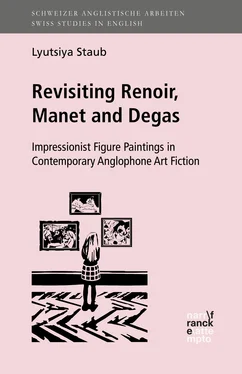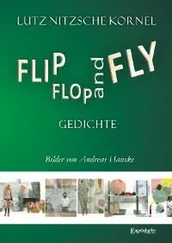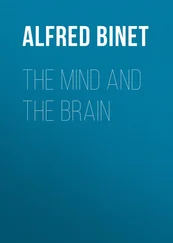[T]exts […] have the ability to evoke or produce the actual visual images alluded to in the minds of the readers […] while at the same time animating and changing them, thereby producing further, perhaps contrasting images. […] [T]he images can be represented in full or significant details, but the dramatization can also take the images apart, take its characters out of the original context of the picture, and allow them to move beyond the picture’s frame. (56-7)
The dramatic type therefore presupposes both the idea of an art object constructing a developing action and transforming objects or figures from the painting into actants in the narrative. By letting the figures step off the canvas, writers give life to characters that “speak and act for themselves, thus reflecting on and interpreting the image they come from in the light of their new quotation context” (57). In general, it seems that, in a manner similar to the three-dimensional representational principle on which quotation and ekphrasis are based, the fictionalisation of painted figures becomes a third-order re-presentation of visually represented models that the artist has chosen to depict. The characters that are also illustrated in the image proper provide yet another perspective on the artwork – the intricacies of their lives frame the context of the image and expand the meaning of the story that is depicted in the artwork itself. At the same time, the presence of models posing for the painting in an ekphrastic text implies the potential company of an artist. Dramatic ekphrasis is therefore considered a sound foundation for art fiction, the main concern of this study. Sager Eidt’s framework, as well as other typologies examined in this chapter, emphasises the fact that it is usually the case that an intermedial artefact borrows from more than just one category, and thus presents a direct and considerable challenge to the qualitative analysis of works of art fiction. Scholars agree that when dealing with the actual ekphrastic texts it is no longer possible to see clear boundaries between the categories: the extreme diversity of intermedial relations, the heterogeneity of ekphrases, and the writer’s use of visual arts force scholars to approach every literary work as an individual case, customizing their analyses accordingly.
2.2. Perception, Re-presentation and the Making of Meaning
I believe one can only develop one’s visionary awareness by close contact with the vision itself; that is by knowing pictures, real vision pictures, and by dwelling on them, and really dwelling in them. It is a great delight to dwell in a picture. (Lawrence 65)
Intermedial interaction, especially between literature and visual arts, seems to have become a trademark of contemporary literature: real paintings are placed in the very foreground of art fiction, they are culturally thematised and historically theorised and often play a constructional role in the written story itself. According to van Alphen, the medium is important only as a means by which “the mechanisms of representation can be explored, shown, and challenged” (836). Representation in this case becomes the result of communication between “the sender and receiver […], the relations between subjects and the subject positions in the representation, the historical and spatial contexts in which representations circulate, and the role these contexts have in the production of meaning” (836). By exploring the role and function of a real artwork, contemporary art fiction constructs a new version of the ‘reality’ of an art object, placing it in historical context and giving it fictitious interpretations. In discussing the accessibility of the past, Hutcheon suggests that
We only have access to the past today through its traces – its documents, the testimony of witnesses, and other archival materials. In other words, we only have representations of the past from which to construct our narratives or explanations. In a very real sense, postmodernism reveals a desire to understand present culture as the product of previous representations. The representation of history becomes the history of representation. What this means is that postmodern art acknowledges and accepts the challenge of tradition: the history of representation cannot be escaped but it can be both exploited and commented in critically through irony and parody […]. (55)
Extant works of art serve as a starting point for many writers of contemporary art fiction. Hepburn points out that “contemporary writers represent artworks to reinforce the concept of representation as enchantment” (3); they speculate on what a work of art is, what it means and what it does; they question historical and critical interpretations of the paintings in a fictional form. Writers themselves confirm that it is always the painting that is the ultimate source of inspiration for their work, and through careful examination of pictorial elements in novels it is possible to study how “the paintings are transformed by their imagination and [we] can understand how their creative process works” (Meyers 2). The writers of the texts this study deals with turn to the subject of Impressionism; they create a portrayal of famous French Impressionists and their models while focusing on re-presenting the paintings by describing the process of their creation, and exploring this process from both the artist’s and the model’s perspectives. This particular genre has been referred to as “fictions about painters” (Bowie), “the portrait-of-the-artist novels” and “artist novels” (Beebe), “atelier narratives” (Joyce) and most recently “art-historical fiction” and “art fiction” (Chapman). According to Chapman, art-historical fiction “reveals a parallel extra-academy, extra-museum art history” (129) by illuminating the past, which can be “conventional and comfortable [as] we know the history or the story already” (132). The term art fiction is used in the bookshop in the Sainsbury Wing of the National Gallery in London to refer to a particular book section with a special selection of fiction about art (painting, architecture, music, dance), schools of painting, artists, studios, models and the artistic milieu; among other variants these are also referred to as art in fiction or art and artists in fiction . In this study the genre will be referred to as art fiction as the analysis includes novels about modern art and artists. Bowie points out that art fiction has nine main characteristics: the description of a painter’s development; the description of the artistic milieu (studio, settings for his paintings, contact with other artists); encounters with other artists, models and dealers; discussions about aesthetic ideas and painting techniques; criticism of art institutions; the description of exhibitions; the existence of a contemporary literary figure; the presence of real artists’ names of the time and, finally, making real artists leading characters (5-6). Research in the genre of art fiction is mostly focused on the psychology of the artist, as exhibited in his/her relationship to the model and the artwork – in other words, the traditional composition of the Pygmalion myth. However, since art fiction addresses an artist’s aesthetic struggle in creating an artwork, and reproduces the painting by describing the process of its creation, the spotlight is on the painter as much as the painting itself. The focus of the present study is on the artwork, specifically on an artwork’s re-presentation and re-interpretation by means of a verbal rendition in ekphrastic art fiction based on actually existing art objects.
The work of art is a historical representation or testimonial of what a painter wants to illustrate, and what the painter believes she/he sees while creating the piece. The writer-observer of the painting exploits a ready-made image, comments on it, places it in a historical context and eventually provides the reader with a new interpretation of it. By doing so, the writer confronts a historical representation of a painting (which has already been interpreted and commented upon by various art historians) with a subjective, fictive re-presentation of the process of creation of the painting. Does it presuppose, however, that the ekphrasis of real paintings is different to the ekphrasis of fictional works of art? The answer to this question may be found in the theory of picture perception.
Читать дальше












